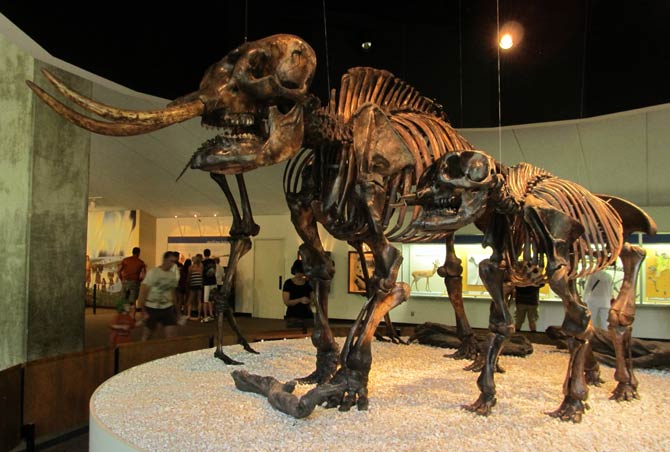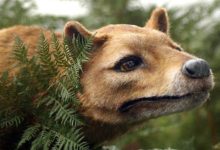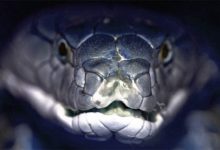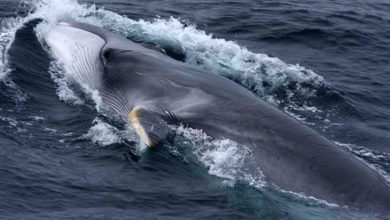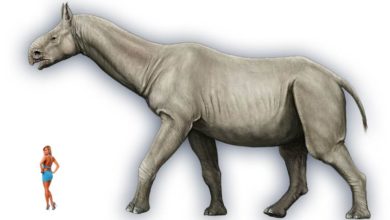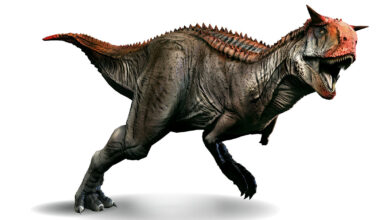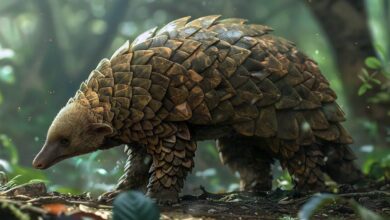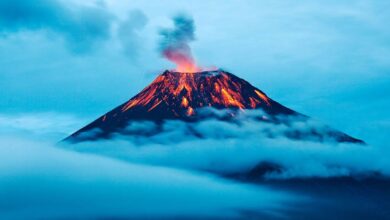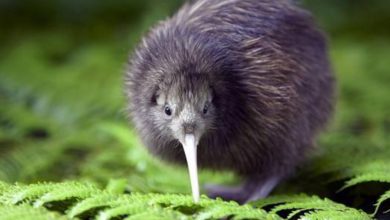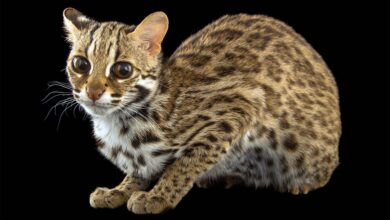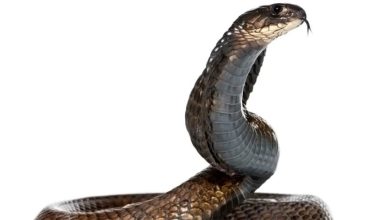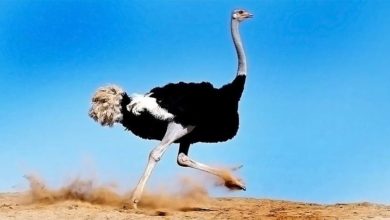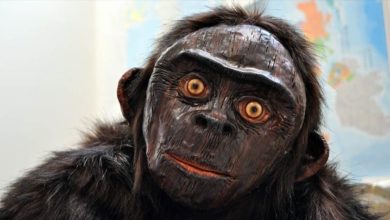Mastodons
Mastodons were to some extent a combination of features of modern elephants and already extinct mammoths. Covered with long hair, they were more similar to the latter, but their tusks and lifestyle indicate a greater resemblance to the Asian elephant living today. What animal was created from this interesting mix of traits? Was it better adapted to life in times of great change? Alternatively, maybe mastodons owe their success in the ecosystems of the Americas to a unique trait – unusual molars, from which the family was named?
Classification
- Kingdom: Animalia
- Phylum: Chordata
- Class: Mammalia
- Order: Proboscidea
- Family: †Mammutidae
- Genus: †Mammut
- Species:
- †Mammut americanum
- †Mammut cosoensis
- †Mammut matthewi
- †Mammut pacificus
- †Mammut raki
- †Mammut borsoni / Zygolophodon borsoni (uncertain) – Eurasia
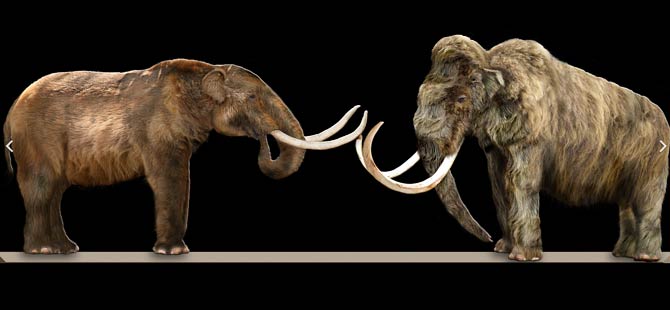
Discovery
The first find classified as mastodon remains was a tooth weighing 2.2 kg (4.85 lb). It was discovered in the city of Claverack (New York state) in 1705. The bones of the mastodon were first found in 1739. They were collected by French soldiers who lived in the area of today’s Kentucky state. The site where numerous fossils of these proboscideans were excavated today is called Big Bone Lick State Park.
Similar remains were soon discovered in South Carolina. After reconstructing the animal, it turned out to be very similar to the African elephant. The first complete skeleton was then discovered in Ohio, including tusks. People stopped calling the new find incognitum (unknown), and the term “mammoth” was increasingly used.
However, the researchers noted that the teeth of the mammoth and the elephant were very different from the “incognitum” dentition. The latter had teeth with conical cusps, which was unusual in the first two species. The discovery therefore had to be renamed. In 1806, the French anatomist Georges Cuvier changed it from “incognitum” to “mastodon”.
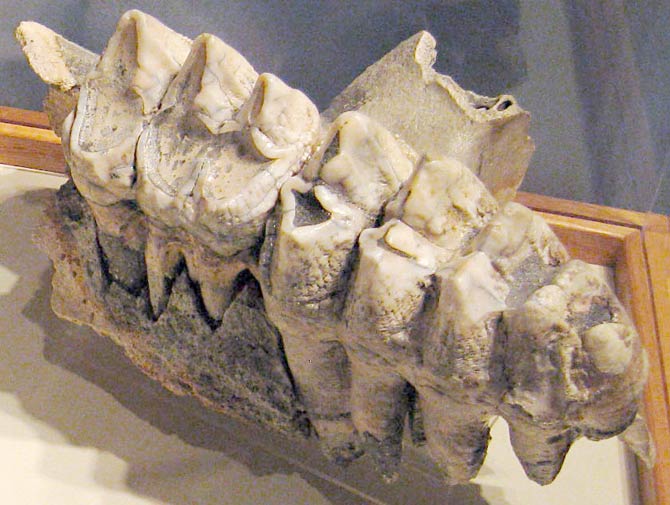
Dating and occurrence
Mastodons lived from approx. 5.3 million years ago to approx. 10 thousand years ago. They lived in North and Central America in the Pleistocene epoch, also known as the Ice Age. Mastodon Borsona († Mammut borsoni) lived and died out about 3 million years ago in Africa, Asia and Europe.
Most of the mastodons occupied limited areas. The exception was the American mastodon, which was one of the most widespread proboscideans in North America during the Pleistocene epoch. His remains have been found in both Alaska and Florida, New England, and even Mexico and Honduras. The latter country is probably the border to which this mighty Pleistocene mammal migrated.
Habitats
There are many indications that mastodons inhabited forests, gaining large amounts of plant food there. It is suspected that these mammals did not disperse to South America because there were no plants that the mastodons could feed on. This, in turn, would indicate their specialized diet.
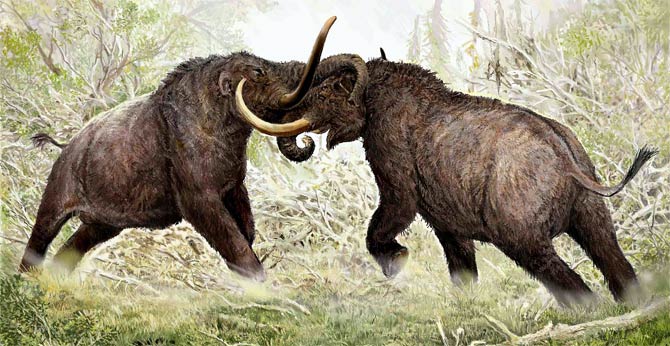
Characteristic
Appearance
Mastodons are thought to be very similar to modern elephants, but less to mammoths. However, they were related to both species.
Comparing mastodons to mammoths, it can be concluded that the former had shorter limbs, but longer and more muscular bodies. Therefore, the silhouette of the mastodons resembled today’s Asian elephants. Both mastodons and some mammoths were covered with dense, long hair, protecting against the cold.
The skull was elongated and set low, with the addition of slightly curved long tusks. In males, they were larger and more curved. The other teeth, as already mentioned, looked like large cones, while the teeth of elephants and mammoths looked like plates. It appears that the unusual shape of the teeth helped these animals chew on soft plant material, including aquatic plants. The mastodons were also slightly smaller than the mammoths, and their heads were more flattened.
Size
The average representative of the typical species, i.e. Mammut americanum, could measure 2.3 – 3.3 m (7.5 – 10.8 ft) in height at the withers and weigh up to 11 tons. Females were smaller than males (this is also the case with modern elephants). Mammut americanum was up to 80% heavier than both extant elephant genera according to Asier Larramendi.
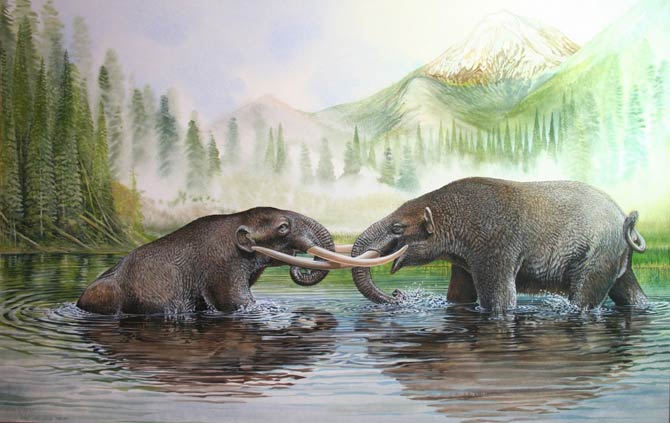
Diet
Although both mastodons and mammoths were herbivores, there were large differences in eating patterns and food preferences between them.
The lumpy molars of the mastodons were designed to crush soft leaves, twigs and larger branches. Mammoths, on the other hand, had plate-like molars, which allowed them to cut tall grass and graze like modern elephants. Both extinct representatives of the Proboscidea, however, had long tusks with which they scraped frozen plants and dug up snowdrifts.
Mastodons, unlike elephants, did not feed on grass, but on low-growing shrubs. Coniferous shrubs appeared to account for most of their diet. It is possible, however, that they also ate low grassy vegetation. This would mean that mastodons could graze in open areas as well as forage in forests. It is also possible that the food preferences depended on the weather conditions.

Lifestyle
Mastodonts formed herds of adult females and their young. Males, like elephants, had to leave the family group after reaching sexual maturity. It is possible that young males remained single for the rest of their lives or sometimes joined so-called bachelor herds. It is also very possible that the mastodons led a solitary lifestyle outside the breeding season. Perhaps the most enduring social unit was the groups of mothers and their offspring.
The long, curved tusks were not as powerful as those of the woolly mammoth (Mammuthus primigenius), but they were not small anyway. Most likely, they were not only shovels, but also weapons. Thanks to them, powerful males could fight among themselves for access to females. It is possible that such clashes sometimes ended with the death of one of the opponents.
The causes of extinction
Mastodons and woolly mammoths became extinct at the same time – around 11,000 years ago, that is during the last Ice Age. Nobody knows what the specific cause of the mastodon extinction was. Scientists maintain that this was due to climate change, competition with newly arrived species, and hunting by the first humans. It is very possible that mastodons were a real morsel for the Homo sapiens tribes – one such large mammal provided food for one tribe for about a month.
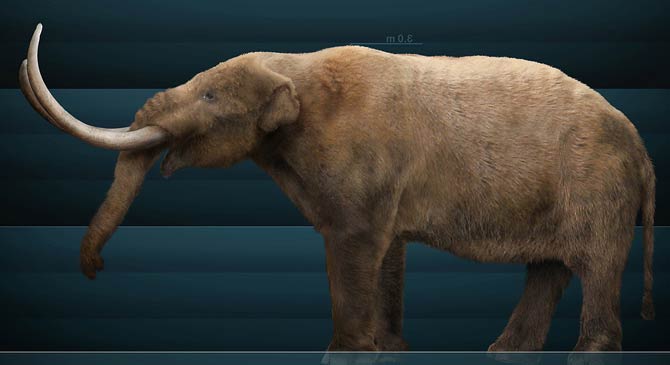
Detailed data / dimensions (size)
Mastodons
- Height at the withers:
- American mastodon (Mammut americanum): 2.3 – 3.3 m (7.5 – 10.8 ft)
- Borson’s mastodon (Mammut borsoni / Zygolophodon borsoni): up to 4.5 m (14.8ft)
- Weight: 4-5 tons
- the largest individuals up to 11 tons (according to Asier Larramendi)
- Mammut borsoni / Zygolophodon borsoni – probably up to 16 tons
- Tusks length: up to 5 m /16.4 ft/ (Mammut borsoni / Zygolophodon borsoni), but less curved than in mammoths
- Lifespan: approx. 60 years
- Temporal range: 5.3 – 0.011 Ma
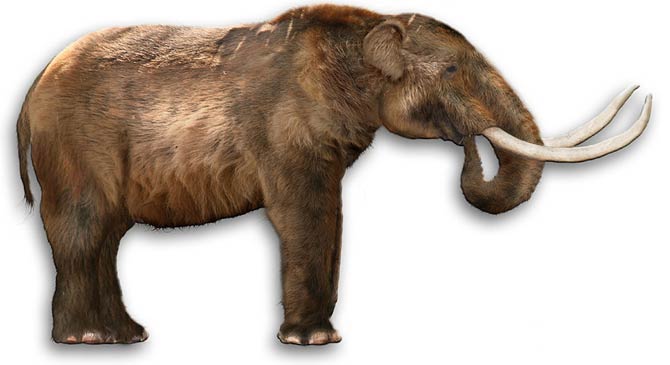
Mastodons – interesting facts
- The name “mastodon” comes from the Greek words for “breast” and “tooth”. It refers to molars, unusual for proboscideans, equipped with tall cusps to rub soft plant material.
- “Mastodont” is considered an obsolete term for the genus. Today mastodons belong to the genus Mammut. However, since such a classification met with considerable resistance, many scientists today use the term “mastodon” to describe members of this one genus.
- Some skeletons show signs of tuberculosis. Characteristic scars remain on the bones of animals suffering from this disease. Some exposed mastodon bones are “decorated” with similar signs. This may indicate their susceptibility to diseases brought from the Old World by the first settlers.
